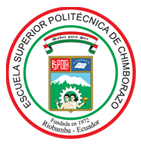ESTUDIO DEL METABOLOMA EN EL ANTAGONISMO MICROBIANO A TRAVÉS DE CROMATOGRAFÍA LÍQUIDA CON ALGORITMOS QUIMIOMÉTRICOS
DOI:
https://doi.org/10.47187/perf.v2i22.50Palabras clave:
Antagonismo microbiano, cromatografía líquida, análisis de componentes principales, Pseudovibrio denitrificans, Vibrio harveyiResumen
El metaboloma es el conjunto de compuestos orgánicos de bajo peso molecular (metabolitos) pro- ducidos por sistemas biológicos. El antagonismo microbiano es una importante fuerza evolutiva, por lo que el análisis de su metaboloma es una herramienta útil para la búsqueda de nuevas molé- culas con actividad biológica. El objetivo de este trabajo fue implementar el uso de algoritmos qui- miométricos para la identificación de variaciones en el metaboloma del antagonismo microbiano entre Pseudovibrio denitrificans y Vibrio harveyi. Extractos de bacterias y del medio de cultivo usado fueron analizados por cromatografía líquida de ultra alta eficiencia acoplada a un detec- tor de arreglo de diodos (UHPLC-DAD). Además, algoritmos quimiométricos fueron aplicados realizando un Análisis de Componentes Principales (PCA) de los cromatogramas obtenidos. Se encontraron tres picos que expresaron una mayor variabilidad entre el metaboloma individual y el metaboloma de la interacción de P. denitrificans y V. harveyi. De esta manera, la metabolómica con UHPLC-DAD y algoritmos quimiométricos demostró ser una herramienta útil para la identi- ficación de picos responsables de las diferencias entre interacciones microbianas.
Descargas
Citas
Burgess JG, Jordan EM, Bregu M, Mearns-Spragg A, Boyd KG. Microbial antagonism: a neglected avenue of natural products research. Journal of Biotechnology 70(1-3):27-32. [Archidoris pseudoargus p. 30. J Biotechnol 70. 1999;70:27–32.
Rypien KL, Ward JR, Azam F. Antagonistic interactions among coral-associated bacteria. Environ Microbiol. 2010;12(1):28–39.
You THC, Feng LZC, Kong JWF. Biocontrol potential of antagonist Bacillus subtilis Tpb55 against tobacco black shank. BioControl. 2015;
Spadaro D, Droby S. Trends in Food Science & Technology Development of biocontrol products for postharvest diseases of fruit : The importance of elucidating the mechanisms of action of yeast antagonists. Trends Food Sci Technol [Internet]. 2016;47:39–49. Available from: http://dx.doi.org/10.1016/j.tifs.2015.11.003
Palazzini J, Roncallo P, Cantoro R, Yerkovich N, Echenique V, Torres A, et al. Reduction of Deoxynivalenol Accumulation and Phytohormone Induction by Two Selected Antagonists. Toxins (Basel). 2018;10(88).
Khabbaz SE, Zhang L, Cáceres LA, Sumarah M, Wang A, Abbasi PA. Characterisation of antagonistic Bacillus and Pseudomonas strains for biocontrol potential and suppression of damping-off and root rot diseases. Ann Appl Biol. 2015;166(3):1–16.
Raina J-B, Tapiolas D, Motti CA, Foret S, Seemann T, Tebben J, et al. Isolation of an antimicrobial compound produced by bacteria associated with reef-building corals. PeerJ. 2016;4:e2275.
Penesyan A, Tebben J, Lee M, Thomas T, Kjelleberg S, Harder T, et al. Identification of the Antibacterial Compound Produced by the Marine Epiphytic Bacterium Pseudovibrio sp. D323 and Related Sponge-Associated Bacteria. Mar Drugs. 2011 Aug;9(8):1391–402.
Murray JA. Qualitative and quantitative approaches in comprehensive two-dimensional gas chromatography. J Chromatogr A [Internet]. 2012;1261:58–68. Available from: http://dx.doi.org/10.1016/j.chroma.2012.05.012
Patti G, Yanes O, Siuzdak G. Metabolomics: The apogee of the omics trilogy. Int J Pharm Pharm Sci. 2012;5(SUPPL. 2):45–8.
Madsen R, Lundstedt T, Trygg J. Chemometrics in metabolomics-A review in human disease diagnosis. Anal Chim Acta. 2010;659(1–2):23–33.
Fiehn O. Metabolomics--the link between genotypes and phenotypes. Plant Mol Biol [Internet]. 2002;48(1–2):155–71. Available from: http://www.ncbi.nlm.nih.gov/pubmed/11860207
Theodoridis GA, Gika HG, Want EJ, Wilson ID. Liquid chromatography-mass spectrometry based global metabolite profiling: A review. Anal Chim Acta [Internet]. 2012;711:7–16. Available from: http://dx.doi.org/10.1016/j.aca.2011.09.042
Fraga CG, Prazen BJ, Synovec RE. Objective data alignment and chemometric analysis of comprehensive two-dimensional separations with run-to-run peak shifting on both dimensions. Anal Chem. 2001;73(24):5833–40.
Szymańska E. Modern data science for analytical chemical data – A comprehensive review. Anal Chim Acta. 2018;1028.
Bartel J, Krumsiek J, Theis FJ. Statistical Methods for the Analysis of High-Throughput Metabolomics Data. Comput Struct Biotechnol J [Internet]. 2013;4(5):e201301009. Available from: http://linkinghub.elsevier.com/retrieve/pii/S2001037014600520
Wehrens R, Bloemberg TG, Eilers PHC. Fast parametric time warping of peak lists. Bioinformatics. 2015;31(18):3063–5.
Mille-Lindblom C, Fischer H, Tranvik LJ. Antagonism between bacteria and fungi: Substrate competition and a possible tradeoff between fungal growth and tolerance towards bacteria. Oikos. 2006;113(2):233–42.
Descargas
Publicado
Cómo citar
Número
Sección
Licencia

Esta obra está bajo una licencia internacional Creative Commons Atribución-NoComercial 4.0.


























